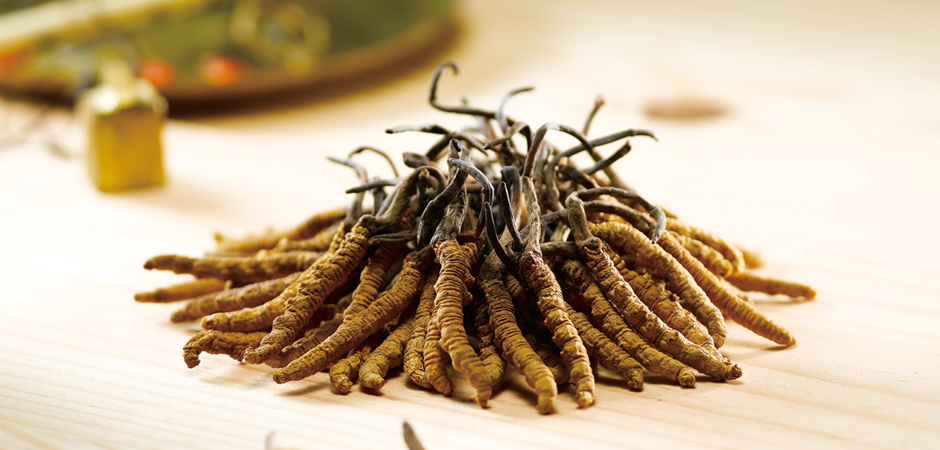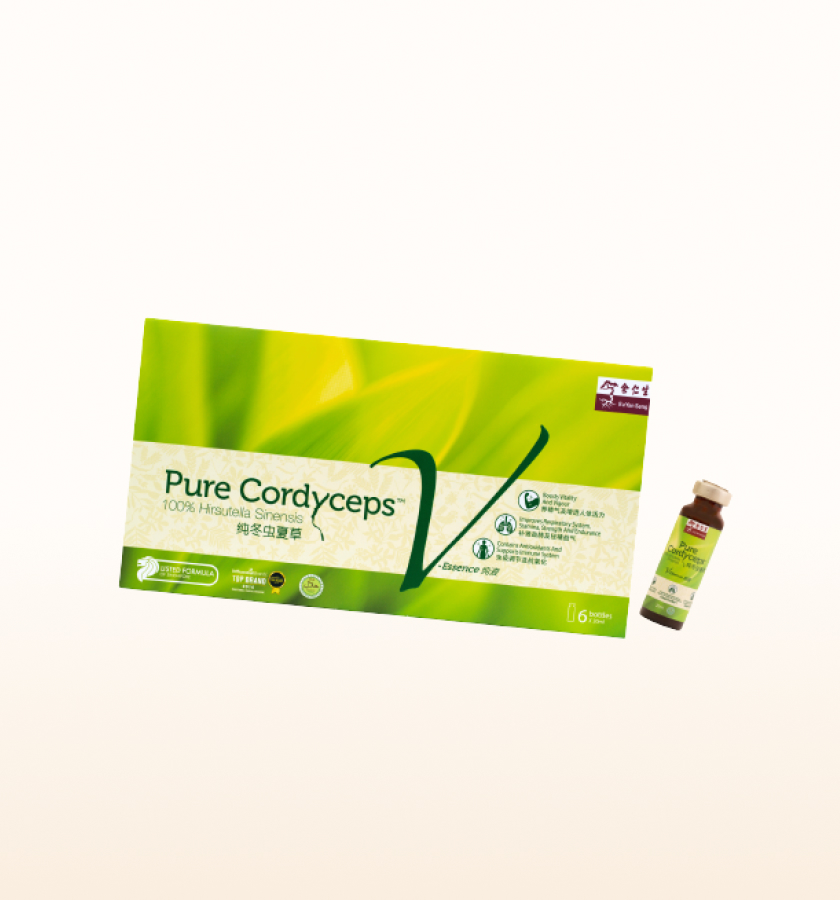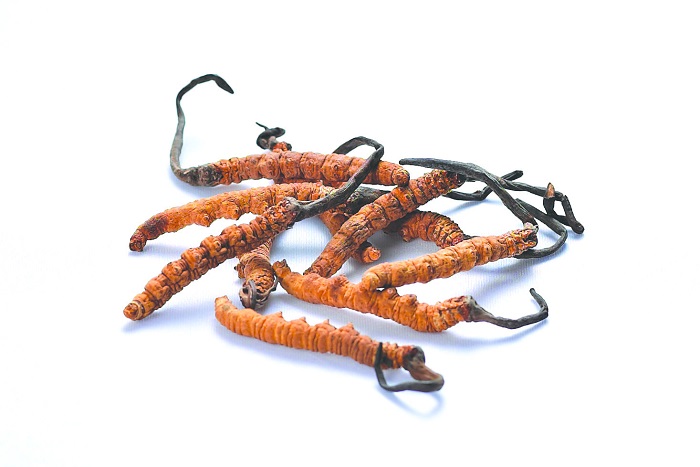ABOUT CORDYCEPS
Cordyceps Just Got More Affordable & Sustainable
Posted on 7 Nov 2022

In "Is Cordyceps an animal or a herb?", you read about top athletes using cordyceps to enhance their performance. The strain of the fungus that was traditionally consumed by the peoples of the Tibetan Plateau was Ophiocordyceps sinensis (O. sinensis)
PHARMACY IN A FUNGUS
O. sinensis was known as Cordyceps sinensis (C. sinensis) before 2007, when a review of the fungus’ genus was published . Studies on cordyceps have focused mainly on O. sinensis or C. sinensis despite numerous other strains.
Traditional healers from the region use cordyceps on its own or in combination with other ingredients to treat, according to one paper , 21 ailments: from cancer and diabetes to asthma and bronchitis to cough and cold to even erectile dysfunction. It adds that C. sinensis “exhibits very broad biological and pharmacological actions in hepatic, renal, and cardiovascular diseases. It has effects on immunological disorders, including cancer. Pharmacological actions of cordyceps are primarily due to bioactive polysaccharides, modified nucleosides, and cyclosporine-like metabolites.” Integrative Cancer Answers founder Dr Nalini Chilkov concurs with these findings. This authority on cancer care and immune system enhancement suggests that the benefits of C. sinensis stem from it being rich in polysaccharides — she calls them “primary immune modulators” — vitamins and minerals .
CORDYCEPS AND WELLNESS
Cordyceps doesn’t just contain potentially beneficial ingredients; it has been shown to actually enhance the body’s performance. If you’re one of the personalities described in Pt 1, you should familiarise yourself with the work of Dr Georges Halpern, a professor emeritus with the University of Hong Kong, who has published several books on cordyceps. His research shows that C. sinensis is able to:
- Improve respiratory function
- Increase oxygen absorption
- Boost stamina and athletic performance
- Maintain healthy cholesterol level
- Reduce tumour size
- Enhance the immune system
Other institutions conducting research on C. sinensis include the University of Nottingham, which is keen to study the anti-inflammatory potential of a chemical in the fungus called cordycepin . This could potentially help “sufferers of asthma, rheumatoid arthritis, renal failure, and stroke damage.” Cordycepin already shows great potential as an anti-cancer drug.
THE QUESTION OF SUSTAINABILITY
The rise in price of wild cordyceps has been breathtaking, from US$1–2 a pound in the 1970s to under US$100 a pound in the 1990s to an eye-watering US$50,000 a pound for the top-grade stuff today. People have been killed over this status symbol, and it’s not surprising that entire villages empty out when the first stalks rise above ground. As children make good harvesters, some schools are even forced to declare cordyceps-picking holidays!
Ecologist Daniel Winkler advises that some stalks be left intact to mature and infect next season’s larvae. However, in the dizzying rush to make big money, villagers rarely take heed, and have to move to ever higher grounds instead. Yields are thus expected to drop as fields are over-picked. At these wind-whipped altitudes, erosion is also a problem when harvesters don’t replace dug-up soil. Compounded by high demand, the situation is clearly unsustainable.
One solution to the environmental and social problems arising from harvesting wild cordyceps is to cultivate it. This will lead to the steady production of a purer fungus (no more poisoning) that can be scaled up (lower price, regular supply), thus sparing the meadows from erosion. Furthermore, cultivated cordyceps is grown without insect hosts. This means people with dietary restrictions such as vegetarians can consume the herb with a clear conscience, while people who would never use wild cordyceps may be enticed to try it now that the ‘yuck’ factor (zombie caterpillars) has been removed.
CULTIVATING CORDYCEPS
Although the solution was obvious, C. sinensis is naturally slow growing, and cultivating it is difficult. Success came only in 1972, when the Chinese Academy of Sciences finally isolated cultures of cordyceps from Qinghai province. And it was only the fourth strain, CS-4, that proved to be fast growing enough for commercial production.
CS-4 and other strains isolated subsequently were thought to be C. sinensis based on morphology or chemical composition. However, with advances in science such as the development of DNA analysis and high-performance chromatography, it was confirmed around mid-2000s that CS-4 was not C. sinensis, but Paecilomyces hepiali . Although CS-4 has health benefits, it is not the same as the highly prized C. sinensis.
The website, Authentic Cordyceps, states, “To date, only a single strain, Hirsutella sinensis, has been officially recognised by both the international scientific arena and the governments in Asia to be the true cordyceps species .” H. sinensis was confirmed in 2001 to be the asexual reproductive stage (anamorph) of C. sinensis, and has been proven to improve physical endurance in rats and exhibit anti-inflammatory properties.
Whether you’re a professional athlete or simply wish to boost your health, try supplementing your diet with C. sinensis, particularly the cultivated type.
|
Eu Yan Sang Pure CordycepsTM The main ingredient in this product is Hirsutella sinensis, a strain of cordyceps that is 99.645% similar genetically to wild cordyceps according to rDNA sequence analysis (ITS 1, ITS 2 and 5.85rDNA). The item is also suitable for vegetarians, as no animal or insect parts were involved in its production process. What’s more, getting this product means you’d be, in a way, supporting sustainability! |
References
1 http://www.mycobank.org/Biolomics.aspx?Table=Mycobank&MycoBankNr_=504340
2 http://www.ncbi.nlm.nih.gov/pmc/articles/PMC3121254/
3 http://www.huffingtonpost.com/nalini-chilkov/cordyceps-cancer_b_854566.html
4 http://www.earthpulse.com/src/subcategory.asp?catid=11&subcatid=55
5 https://www.nottingham.ac.uk/news/pressreleases/2012/november/rare-parasitic-fungi-could-have-anti-flammatory-benefits-.aspx
6 http://ngm.nationalgeographic.com/2012/08/tibetan-mushroom/finkel-text
7 http://www.marahvistendahl.com/caterpillar-fungus/
8 http://www.alohamedicinals.com/cordyceps.html#.V0ecUdR96t8
9 http://www.authenticcordycepssinensis.com/
10 http://www.authenticcordycepssinensis.com/
11 http://www.ncbi.nlm.nih.gov/pubmed/25792655
12 http://www.ncbi.nlm.nih.gov/pubmed/23459183
.png)



